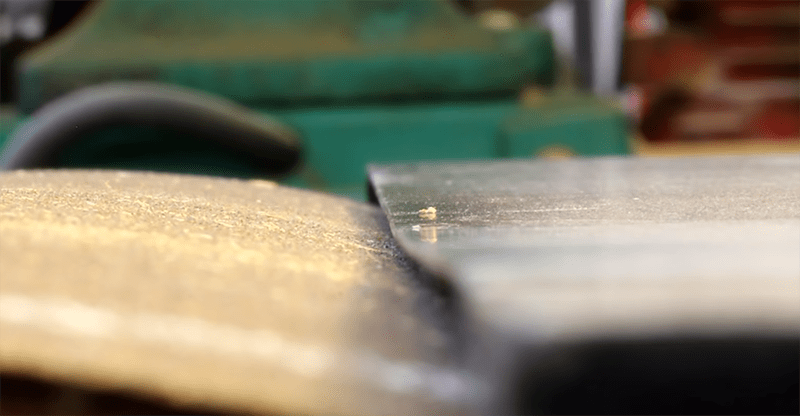What do you do when you have a gigantic old drum sander with a bent table? Scrapping it will give you a few cents per pound, but this machine is just too cool, and would be too useful to just throw away. That’s when inspiration strikes. To fix this old machine, [Frank Howarth] built a new bed for an old drum sander out of wood.
The machine in question is a Frank H. Clement Surface Sanding Machine from the early part of the 20th century. This machine is basically a 30 inch long, 14 inch diameter drum that’s wrapped in sandpaper. There are removable tables for this machine, and basically what we’re looking at here is a jointer that can handle 30-inch wide boards, only it’s a sander. [Frank] picked up this machine way back in 2015 from a friend for free, but everything has a cost. There’s a problem with this sander: one of the previous owners stored a heavy jointer on the table, and the hefty iron bed was bent down in the middle. This makes the vintage surface sanding machine absolutely useless for anything. A new bed would have to be constructed.
[Frank] is a master craftsman, though, and he has enough scrap wood sitting around to build just about anything. After taking some careful measurements of the frame of the sander, he cut and glued up a few large panels of a glueLam beam, salvaged from an earlier operation. This beam is tremendously strong, and resawing and gluing it up into a panel produced a very hefty board that’s perfect for the bed of a gigantic, ancient surface sanding machine.
The actual fabrication of the new bed happened on [Frank]’s CNC router. The bottom of the bed was easy enough to fit to the cast iron frame, but there was an issue: because these tables are meant to butt up against a spinning drum, [Frank] needed to cut away a cove underneath the table. A CNC router can easily do this, but apparently the glueLam beam couldn’t handle it — a bit of the edge split off. These panels are basically made of glue, though, and some quick action with a few clamps saved the project.
The bed for this sander is now done, and a change in the pulley brought the speed of the drum down to something reasonable. Of course, this is a woodworking machine from the early 1900s, and safety was a secondary concern. We’re not worried, though. [Frank] still has all his fingers. A guard for the belt is in the works, though.
















Frank makes some fantastic woodworking videos. He really enjoys what he does and puts an engineering mind to quite a few of his projects. I highly recommend his channel.
That voice. He could be working in radio :-D
Yes the belts need a shield for safety reasons, but there is another reason for the shield. A shield extends the life of the belts and the sheaves by keeping the shop dust away from them. With that type of sheave mounting (Quick Detach) a jawed type puller isn’t need to full off the sheave The bolts that are used to pull the sheave onto the taper can be used to push it off the taper. Smart thinking, and time investment, is way guys like this man can afford shops most envy A bit of luck involve in finding usable just most do,’t want to screw wit, but one first has to be willing to repair usable junk.
Oh, I like that!
I’m no woodworker so this is a very uninformed question: as I understood, the two tables are perfectly level each to other; I wonder – shouldn’t the output table be a little bit higher than the input table? (at the drum top level, to match the material cut)
The long shaft is there for a very wide wheel/pulley for a leather belt from an overhead shaft in a steam or electric motor driven shop.
Anyway, why not some Bondo and be done?
Either that, or flip the table over and hit the backside of the dent with a hammer.